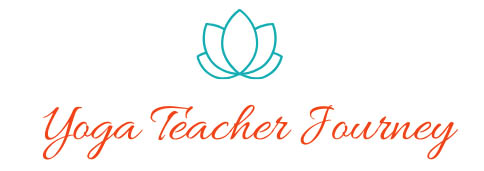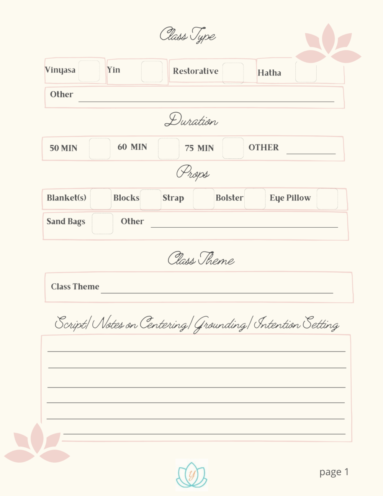There is so much information to process as a new yoga teacher. It’s easy to get “in your head” about everything you’ve learned to provide a well-rounded, memorable class to your students. Memorizing your sequence alone can lead to anxiety (I always had notes handy in the beginning), let alone presenting your theme, Pranayama, and a relaxing Savasana.
Below I offer ten simple tips to make your class memorable and beneficial for your students (allowing them to get out of their heads).
1. GREET YOUR STUDENTS
Make eye contact as people enter the room and say hello with a smile. No one likes to feel they are invisible (and if they do you will get the message soon enough). If it’s a new student, saying hello and offering your name prompts them to answer by telling you their name. This is helpful so that you can put a face with a name, and if you are the one checking them into your booking system, you’ll be able to take care of that as well. If you can do so privately, it doesn’t hurt to know the new student’s level of experience. Is this their first class? If the room gets too crowded at once, you can always try to get their name at the end of class. This step is important for online classes as well. You’ll have a better idea of names of course as they enter online but greeting them is equally as important.
2. INTRODUCE YOURSELF
Even though you’ll be introducing yourself to most students as they enter the class, you’ll want to introduce yourself to the entire class to get things started. This way you’ll get everyone’s attention, and they’ll know class is about to begin. If you are streaming and recording your class online this is key once you begin recording. I usually say something like “Okay, let’s get started… hello everyone, my name is Cher…,” and then I continue to share information about the class I’m about to teach. More on that below.
3. INTRODUCE THE CLASS
Once you’ve introduced yourself, you’ll introduce the class and provide information. I would say something like “Okay, let’s get started… hello everyone, my name is Cher and this is Vinyasa Flow Level 1. For this class you may want to grab a blanket and two blocks. We’ll be here for about an hour.” Now, you’ve provided the following information:
- Your name
- The type of class and level
- Props that may be needed
- The duration of the class
4. LOOK AT BODIES AND WATCH STUDENTS
I want to emphasize this step. Things changed during Covid and most teachers found demoing to be the new normal online. Watching students may have become difficult since students had the option to turn off their cameras and not be seen online. The emphasis for many teachers, became precise cueing and demonstrating of postures. If you are still streaming your classes online, looking at bodies may still be a challenge.
If possible (in-studio or online), look at your students’ bodies initially and watch them as class gets started. By that I mean, look at their conformation (body structure) and how they move. This will help you teach and cue to those bodies specifically. Yoga is for EVERY BODY. Even though we all have similar body structures, we are not all built the same. That makes us each unique individuals perhaps requiring modifications and props for some postures. In addition, not everyone practices regularly and has the same level of flexibility. Watching students warm-up and move through Surya Namaskar A (Sun Salutation A) will give you a lot of information. Then, continue to check their alignment and offer modifications as needed throughout the class.
5. GROUND AND CENTER STUDENTS
Once students are in your chosen starting posture, it’s time to ground and center them. Cue them into closing their eyes or taking a soft or downward gaze, turning their awareness inside, and noticing how they feel. You might suggest they do a mental scan of their body from the crown of their head to their toes and to notice any areas of tightness or tension. Sending attention to those areas will help to get energy flowing. You are teaching students to slow down and to practice awareness. From here you will introduce your initial Pranayama (breath control) and present your theme for the class.
6. PRANAYAMA
Begin cueing students into your chosen initial Pranayama. (Read How to Teach Pranayama for more information.) Once you have guided them through a few rounds of breath control, ask them to continue breathing in that way on their own. While they continue, you will present your theme for the class.
During class, continue to cue students to inhale and exhale for most postures (e.g., deep breath in, full breath out; breath in, breath out). Remind them at times to breathe while holding a posture. You might also introduce another type of Pranayama at another point in your sequence. For example, when you come back to seated for a cool-down period or as they settle in for Savasana (corpse pose).
7. PRESENT YOUR THEME
While students are in the chosen starting posture and breathing through the initial Pranayama, present your theme. (Read How to Theme a Yoga Class for more information.) Take your time presenting and don’t rush your words. Give students space and time to digest and reflect on the theme you are presenting. When finished, cue them to return to the natural rhythm of their breath and continue the class.
8. GIVE STUDENTS TIME AND SPACE
During class it’s important to give students time and space to themselves. Don’t fill every moment with words. This may be exactly what you want to do when beginning to teach and it is one of the downfalls. Students need time to think about the cues you have given them to get into the posture, to feel the posture in their own bodies, and to become aware and reflect on what they’re feeling. That is not possible if every second is filled with hearing your words.
9. RETURN TO YOUR THEME
Return to your theme a few times during class. I like to do this during Tadasana (mountain pose) at the end of a Surya Namaskar (Sun Salutation) series, during Balasana (child’s pose), and/or during any posture that may be appropriate for the theme (e.g., Virabhadrasana 1 or 2 during a class about being a warrior). Finally, wrap up your message during Savasana – Either as you are cueing them to relax, when you are bringing them out, or at the very end of class.
10. AMPLE TIME IN SAVASANA
Giving students enough time in Savasana (corpse pose) is one of the most important tips I can provide. Savasana is said to be THE most important posture; the time where students take in all of the benefits of their yoga practice. Not giving enough time is one of the biggest complaints from students. So how much time is enough? As a general rule, about 10 percent of the class duration is appropriate. So, for a 60-minute class you will allow about 6 minutes in Savasana. A 75-minute class, 7 or 8 minutes.
Remembering to incorporate these simple steps as you teach your yoga class will make it memorable and keep your students returning for more.





